Day 2 :
Keynote Forum
Dimitar Ouzounov
Chapman University, USA
Keynote: Geo space observation of natural and anthropogenic processes
Time : 09:35-10:10
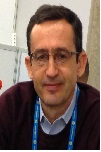
Biography:
Dimitar Ouzounov is an Associate Professor at Chapman University. He works as a Research Scientist in geo-physics, satellite earth observations, and geo-computing. He conducts research on utilizing near-space earth observations for studying geodynamics processes. He contributed in validation of the new geophysical theory of lithosphere-atmosphere-ionosphere coupling in relation to earthquake processes. He has coordinated international initiatives on utilizing space-borne and ground observations for earthquake hazard risk assessments. He has won multiple NASA grants and has published more than 150 papers. He teaches satellite applications in natural hazards at Chapman University. He is a Keynote speaker at international conferences.
Abstract:
We study the impact and effects of different natural and anthropogenic events on atmosphere and ionosphere by using multi-instrument geospace observations. The coupling processes within the system Earth System of Atmosphere-Ionosphere attract more and more attention from the world scientific community. One of the most discussed recently topics in geophysical science is the coupling mechanism, which generates anomalies in different near-Earth shells starting from boundary layer of atmosphere up to magnetosphere of our planet, which was generalized in the form of the Lithosphere-Atmosphere-Ionosphere Coupling (LAIC). We use multi-instrument space-borne observations including NASA/EOS, NOAA/POES, EUMETSAT, CNES/ DEMETER, FORMOSAT-3/COSMIC, as well as ground observations of GPS/TEC and meteorological monitoring data to study changes in Earth troposphere and plasma environment system under various geophysical conditions including natural and anthropogenic disasters. We have found that many of different natural and anthropogenic phenomena contain similarity of their behavior and effects on atmosphere and ionosphere. We are presenting few cases from our analyses, which show the synergetic behavior of different atmospheric and ionospheric parameters related to: (1) Phenomena preceding large earthquake (Wenchuan, China, 2008; L’Aquila, Italy 2009; Tohoku, Japan, 2011); (2) Effects associated with major hurricanes and dust storms; and (3) Radioactive pollution during technological disaster (Fukushima 2011).
Keynote Forum
Dorian Gorgan
Technical University of Cluj-Napoca, Romania
Keynote: Visual analytics on multidimensional big data
Time : 10:10-10:45
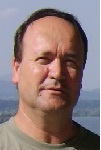
Biography:
Dorian Gorgan is a Professor in Computer Science Department of the Technical University of Cluj-Napoca, PhD supervisor in Computers and Information Technology, and coordinator of the Computer Graphics and Interactive System Laboratory. The fields of interest involve parallel and distributed processing over HPC infrastructures such as Grid, Cloud, Multicore, and cluster, development of platforms and applications for spatial data processing and visualization, interdisciplinary research in the domains of Earth Sciences and Earth Observations. He has been involved as scientific coordinator and WP leader in national and international research projects such as BIGEARTH, PECSA, enviroGRIDS, IASON, SEE-GRID-SCI, GiSHEO, mEducator, iTRACE, MedioGrid, COMPLEXHPC, and KEYSTONE. He has been member of scientific and reviewing committees of many ISI Journals and international conferences, and gave more than 300 papers and presentations in journals and prestigious conferences in the domains of Computer Science and Earth Observation.
Abstract:
Earth Observation data repositories increase significantly each day, and operations such as storage, processing, management, and nevertheless understanding are nowadays challenges. The new concept of big data concerns with massive data of large diversity, received from heterogeneous sources, in various formats and contents, and requiring high performance computation. The scientific community works on developing performant algorithms for mining such huge repositories in order to classify data in expected categories. The high performance computation infrastructures such as cloud, grids, multicore, clusters, are able more or less to cover the computation requirements for huge distributed data. Moreover we are able to combine the performant software packages with high performance computation resources in order to transform, classify, and highlight significant data. Even so, the analytical capacity of the systems is still limited. Nevertheless the human brain has a much greater analytical and synthetic capacity. The presentation highlights and analyzes some related questions such as: How we could combine in an efficient manner the high computation capacity of the machine with the analytical capacity of the human in the context of multidimensional data? How we could comprehend the flow of data through multiple dimensions when the human is able to perceive data in just a few dimensions? How we could interact with the system in order to control the visual analytics? A few use cases will exemplify the concepts and notions.
- Satellite Navigational Systems
Types of Satellites & Applications
Satellite Subsystems
Space Missions
Military and Non-Military Satellite Technology

Chair
Dorian Gorgan
Technical University of Cluj-Napoca, Romania

Co-Chair
Luiz Sampaio Athayde Junior
Federal University of Bahia, Brazil
Session Introduction
Dimitar Ouzounov
Chapman University
USA
Title: Testing geospace technologies for alerting large earthquakes: An integrated approach of space and ground observations
Time : 11:05-11:30
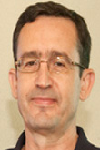
Biography:
Dimitar Ouzounov is an Associate Professor at Chapman University. He works as a Research Scientist in geo-physics, satellite earth observations, and geo-computing. He conducts research on utilizing near-space earth observations for studying geodynamics processes. He contributed in validation of the new geophysical theory of lithosphere-atmosphere-ionosphere coupling in relation to earthquake processes. He has coordinated international initiatives on utilizing space-borne and ground observations for earthquake hazard risk assessments. He has won multiple NASA grants and has published more than 150 papers. He teaches satellite applications in natural hazards at Chapman University. He is a Keynote Speaker at international conferences.
Abstract:
The most recent catastrophic earthquakes (Nepal 2015, Japan 2011, Haiti 2010, China 2009, Pakistan 2007 and Sumatra 2004) claimed thousands of lives and caused extensive economic losses in the affected region. The science community is seeking new ideas in the development of earthquake hazard mitigation scheme. We are proposing a scheme requiring interdisciplinary which has the latest Geo-space and remote sensing technology based on multi platform data observations. A new multi-sensory approach of analyzing atmospheric and ionospheric signals and the search for pre-earthquake physical phenomena, which is being developed using geospace sensing techniques and ground data segments. This new approach is still in an early stage of testing and is based on data fusion of satellite thermal observations (LEO, GEO) in conjunction with GPS/TEC (GNSS) and ground multi parameter (seismicity patterns, gas content) continuous measurements. The proposed methodology uses existing satellite sensors and ground observations in one integrated Sensor Web framework defined by the Lithosphere-Atmosphere-Ionosphere Coupling (LAIC) concept. Our initial test results show that simultaneous satellite and ground measurements, used as an integrated web, could provide earthquake short-term alert capabilities (several days) for major earthquakes by combining the information from multiple space born platforms. The significance of initial prospective testing of short-term alerts is discussed within the framework of the latest M7.9 earthquake in Nepal and major activities in 2012-14.
Ramesh L Shrestha
University of Houston
USA
Title: Geodetic imaging technologies for research and education
Time : 11:30-11:55

Biography:
Ramesh L Shrestha is a PI and the Director for the NSF funded center, the National Center for Airborne Laser Mapping. NCALM’s other goal is to provide state-of-the-art research capabilities in geosensing and remote sensing technologies. He has been elected as a University Professor of College of Engineering at UH. His research activities are associated with the application of advanced geodetic and remote sensing techniques, including airborne LiDAR and digital imaging.
Abstract:
Geodetic imaging represents a golden age in geodesy, enabling geodesists to provide never-before-available quantitative information to researchers and educators in the geosciences community, and related fields of science. Air-borne LiDAR, Light Detection and Ranging observations, and such derived products as ‘bare earth’ digital elevation models, are being used to study about the earthquake deformation fields, fault slip rates, folding mechanisms, landslide dynamics, channel network evolution, landscape response to tectonics, marsh evolution, forestry, archaeological sites and more. LiDAR technology is still developing rapidly, with high priority being given to multi-color systems, and instrument miniaturization that will enable the deployment of LiDAR in remotely piloted aircraft, also known as drones. Therefore these technological improvements become operational new scientific problems which will be brought within reach of an increasingly diverse community of researchers. The National Center for Airborne Laser Mapping (NCALM) provides geodetic imaging technology using airborne LiDAR systems owned by UH to scientific communities at large. In addition to operational funds provided by United States National Science Foundation (NSF) for NCALM’s PIs, Co-PIs and staff, the center also receives funding for projects from other federal agencies (e.g., USGS, NASA, NOAA, and the US Park Service), Japanese Government, state agencies, academic institutions, and private sector companies. During the past 12 years NCALM has completed some 130 projects, including 90 ‘seed projects’ proposed by graduate students as part of their research to earn graduate degrees. In the past 5 years NCALM has extended its operations to collect airborne LiDAR observations, which is well beyond the continental United States, including remote projects in Hawaii, New Zealand, Central America, and Antarctica. This presentation will highlight NCALM accomplishments during the last 12 years.
Luiz Sampaio Athayde Junior
Federal University of Bahia
Brazil
Title: Paradoxical Variation of the solar day related to Kepler/ Newton System
Time : 11:55-12:20

Biography:
Luiz Sampaio Athayde Junior is a Professor at School of Accounting Sciences of Federal University of Bahia (FCC/UFBA) and also Professor of Astronomy Course of Physics Institute (IF/UFBA) and the University Jorge Amado (Unijorge), ex Professor at Cairo University of Viscount (FVC) of over graduation and has experience as a Tax Analyst. He completed his Master in Business Administration and Extension in Higher Education Methodology by the School of Administration of Federal University of Bahia (EA/UFBA), Post Graduate MBA in Financial Management and Company, Post Graduate and Research Center at Cairo University of Viscount (CEPPEV/FVC). Accountant and Degree Bachelor of Accounting Sciences by Estacio University Center of Bahia (Estacio/FIB) and is certified by IAFC First Degree in International Standards of Accounting-IFRS. His publications of accounting area have appeared in many websites specializing in tax and international accounting standards-IFRS. He is author of the Blog www.contabeisufba.blogspot.com.br. His research in the accounting area also made him the creator of New Accounting Policy, recently published in the Brazilian Journal of Accounting (RBC), the most important publication in Brazil in this area. His research interests in Astronomy area helps to create a Tropical Astronomy and new seasons for tropical zone.
Abstract:
According to the first law of Kepler, the planets orbit the sun in elliptical path. This ellipse causes a slowdown in the world when it goes from the nearest point of the sun to the farthest point and also causes acceleration when the opposite occurs. This variation of the velocity of the planet combined with the inclination of its imaginary axis creates the anal Emma chart, which can be found with the overlap of the positions of the sun in a particular location always in the same time set on a watch. The anal Emma, in turn, describes variations in the durations of the solar day. In some dates, these variations in solar days occur in accordance with the change in velocity of the planet, but at other times, they get along perfectly Conversely, showing in some parts of the solar days year that will gradually reducing their periods as the planet decelerates and also increases periods as the planet accelerates.
Dorian Gorgan
Technical University of Cluj-Napoca
Europe
Title: Flexible and adaptive processing of earth observation data over high performance computation architectures
Time : 12:20-12:45

Biography:
Dorian Gorgan is a Professor in Computer Science Department of the Technical University of Cluj-Napoca, PhD supervisor in Computers and Information Technology, and coordinator of the Computer Graphics and Interactive System Laboratory. The fields of interest involve parallel and distributed processing over HPC infrastructures such as Grid, Cloud, Multicore, and cluster, development of platforms and applications for spatial data processing and visualization, interdisciplinary research in the domains of Earth Sciences and Earth Observations. He has been involved as scientific coordinator and WP leader in national and international research projects such as BIGEARTH, PECSA, enviroGRIDS, IASON, SEE-GRID-SCI, GiSHEO, mEducator, iTRACE, MedioGrid, COMPLEXHPC, and KEYSTONE. He has been member of scientific and reviewing committees of many ISI Journals and international conferences, and gave more than 300 papers and presentations in journals and prestigious conferencesin the domains of Computer Science and Earth Observation
Abstract:
The earth observation data repositories increasing dramatically by several terabytes each day become a big issue for organizations. The administration of the storage capacity of big datasets, access policy, data governance, protection, searching, fetching, and complex processing require high costs that force the organization to search for solutions to balance the cost and value of data. Data can create value only when it is used, and the data protection has to be oriented toward allowing innovation that sometimes depends on creative people, which achieve unexpected valuable results through a flexible and adaptive manner. The users need to describe and experiment themselves different complex algorithms through analytics in order to valorize data. The analytics uses descriptive and predictive models to gain valuable knowledge and information from data analysis. Possible solutions for advanced processing of big earth observation data are given by the HPC platforms such as cloud and cluster. With platforms becoming more complex and heterogeneous, the developing of applications is even harder and the efficient mapping of these applications to a suitable and optimum platform, working on huge distributed data repositories, is challenging and complex as well, even by using specialized software services. From the user point of view, an optimum environment gives acceptable execution times, offers a high level of usability by hiding the complexity of computing infrastructure, and supports an open accessibility and control to application entities and functionality. This presentation exemplifies some earth observation use cases based on flexible description of processing, and adaptive and portable execution over HPC infrastructures.
Matviyenko Sergiy Anatoliyovich
State enterprise \"Design office\" Yuzhnoye \"of M.K.Jangel\"
Ukraine
Title: The conceptual project of the geophysical microsatellite
Time : 13:35-14:00

Biography:
S A Matviyenko was born on 26.09.1960. In 1984 he has finished the Dnepropetrovsk State University, physico technical faculty. Since 1986 he is been working in SDO ''Yuzhnoye''. In 2011 has protected the master's thesis on a theme «the Radio physical method of measurement of parameters of a gravitational field of the Earth» which is based on five patents of Ukraine and eighteen publications in collections Ð’ÐК of which five are made without co-authors. In 2015 the senior scientific employee has received an academic status. He has five copyright certificates of the USSR, 11 patents of Ukraine, three demands for the invention, eight «Certificates on registration of the copyright to product», and also has published 43 scientific articles.
Abstract:
In SDO ''Yuzhnoye'' have been developed a radio physical method of measurements of parameters gravitational field of the Earth, which is based on measurement of size of change of frequency of electromagnetic radiation by gravity with the subsequent definition of a gradient or acceleration of free falling. This method has two versions: - Differential radio physical method; -Integrated radio physical method. Technically the difference between these two versions of a method consists that gravitational displacement of frequency is measured in a differential method between two receivers of electromagnetic radiation, and in integrated - between a source of radiation and the receiver. Within the limits of project STCU â„– 3856 experimental researches of a radio physical method have been spent. Considering specific requirements on realisation of a differential radio physical method the project of the gravitatsionno-focused geophysical microsatellite has been developed. The project of the geophysical microsatellite is innovative as regarding a method of measurements, and a part of design-layout scheme microsatellite : • The Radio physical method allows to measure gravitational potential, acceleration of free falling, a gravitational constant and weight of planets. • The Design-layout scheme of the geophysical microsatellite excludes necessity of use of active system of stabilisation, provides constant light exposure of solar batteries, excludes the revolting moment caused by influence of external factors, and allows to solve problems of measurement of parameters gravitational field of the Earth • The Radio physical method is based on measurement of relativistic effect of gravitational displacement of frequency of an electromagnetic signal which has not found till now practical realization.
Masayuki Itoh
Kobe University
Japan
Title: ARD (Alpha-Ray Detector) on board SELENE : design, in-orbit performance and scientific outcome
Time : 14:00-14:25

Biography:
Masayuki Itoh is a professor at the Graduate School of Human Development and Environment of Kobe University. He recieved PhD from the University of Tokyo in 1988. His research field is observational astrophysics. He participated in the Japanese X-ray astronomy missions including Ginga, Asuka, and Suzaku. He is a member of the SELENE/ARD and playing leading role in the in-orbit calibration and analysis of the data.
Abstract:
Measurement of alpha-particles from 222Rn and 210Po in the decay series of 238U on the moon provides informaton on subsurface distribution of uranium, gas emisson on the lunar surface, and hence the crustal structures. Radon alpha-particles were detected by the experiments on board Apollo 15, 16, and Lunar Prospector. They revealed radon emanantion in the Aristarchus region during the observation periods, indirect evidence of time variation of the gas emanation sites, and radon emanation in the last several decades at sites on the edges of mare regions. However, the spatial resolution was limited, and time variation was not directly observed because of the insufficient statistics of the data in both experiments and relatively short observation periods in the case of Apollo. Alpha-Ray Detector (ARD) onboard the Japanese lunar explorer SELENE was designed to observe the alpha-particles with improved statistics. It is an array of 48 SSD chips with anticoincidence to reduce the cosmic-ray background. The effective area is 326 cm2 which is more than an order of magnitude larger than the detectors in the previous missions. This paper introduces the design of the ARD and reports its in-orbit performance and the scientific outcome. Althoug the anticoincidence function did not operated properly in the orbit, the large area of the detector made it possible to map the radon alpha-particle intensity distribution with improved spatial resolution and detect time variation of the radon emanation. Concentration of radon emanation in the last several decades was observed at craters in Aristarchus and Kepler regions.
Porzia Federica Maffione
Polytechnic of Turin
Italy
Title: A GUI for optimization of low-thrust trajectories for nuclear and solar electric propulsion
Time : 14:25-14:50

Biography:
Porzia Federica Maffione completed her Master’s degree in Mechatronic Engineering from Polytechnic of Turin. Her project thesis was on space propulsion for human spaceflight with VASIMR and the aim of this project was to study the optimization problem with indirect method. Currently, she is doing PhD at Polytechnic of Turin on astrodynamics and space robotics. Her first publication was on optimal low-thrust trajectories.
Abstract:
The optimization of low-thrust trajectories is a well know subject and now-a-days it is important to have a simple graphical interface in order to obtain in a very fast way the optimized results to compare different solutions. The optimization, in this case, is made with indirect method and it is possible to optimize travels in the entire solar system. The optimization of the trajectory and the optimization of the spacecraft are two separated steps, linked together by a single parameter: The specific mass of the power generator. The entire problem is solved under the assumption that the specific mass of the power generator is constant for the nuclear propulsion. In the case of solar propulsion, this key parameter depends on the distance of the spacecraft from the sun. In this work, the optimization is solved for circular orbit and taking into account all phases of the journey, spiraling around the departure planet, interplanetary cruise and spiraling around the destination. It is also possible to evaluate the opportunity of journey in presence of space elevator, very effective gateway to solar system, able to make robotic and human explorations faster and cheaper. All results are strongly documented with a large variety of plots.
Heejin Bae
KARI (Korea Aerospace Research Institute)
Korea
Title: Optimized image collection planning for KOMPSAT
Time : 14:50-15:15

Biography:
Heejin has completed her Master’s Degree from Korea University of Electronical engineering and worked at Samsung Electronics. Her major is equalizer algorithm of mobile communication. She developed the receiving system and operation system of satellite at KARI. At present, she works as TLO (Technolgy Licensing Organization) and manages the overall patents of KARI.
Abstract:
KARI (Korea Aerospace Research Institute) has four Low-Orbit Satellite as KOMPAST (KOrea Multi-Purpose Satellite)-2, KOMPSAT-3, KOMPSAT-3A and KOMPSAT-5 on operation at present. Because each KOMPSAT has different sensor characteristics, KOMPSAT series provide high-level and various services for satellite image. But above all, we should consider optimized image collection planning problem for KOMPSAT-2 to minimize human resource. Image collection planning must be considered to minimize human resource and maximize satellite resource. And, because image collection planning is considered not as single satellite but as multi-satellite, the process will be so complicated. KOMPSAT-2 operates under several complicating operational constraints such as camera roll tilt, satellite resource availability, weather conditions, and order priorities. The satellite image collection planning problems are known to be difficult in practice. Because customer requests usually span large geographical areas and their images can only be obtained from certain satellite orbits, each of the requested areas is usually divided into several small-size continuous-observation areas, which are called segments. Under the strip mode operation, the satellite collects the segments one at a time. The length of a segment is determined beforehand by an expert based on the configuration of the region of interests before the image collection planning starts. Given a set of several segments, many of which are overlapping, the planning problem becomes a selection problem to choose as many non-overlapping segments as possible under several operational constraints.
Ali Emre Destegul
Turkish Air War College
Turkey
Title: The use of satellites in the border security
Time : 15:35-16:00

Biography:
Ali Emre Destegul, was born in 1986. He graduated from Department of Electronic Engineering of Turkish Air Force Academy in 2007. After graduating from 2nd Main Jet Base(MJB) as an jet pilot, he was assigned to 4th MJB where he became an F-16 pilot. He was assigned to 8th MJB, Diyarbakır between 2010 and 2014. He has approximately 1000 flight hours. He has a master degree study on “Image Fusion” from Aeronautics and Space Technologies Institute in Istanbul. He attended Turkish Air War College(TAWC) in 2014. He has published a few papers in local military organizations and is a student officer in TAWC.
Abstract:
The progress in satelite technologhy has been a source of solutions to many problems and it seems to continue. One of the best example that civil and military technology work on together is providing detection ability by satellites. We can benefit from this feature to ensure the security of borders. In the first part of the study it is investigated that how military and civil technology has been evolved. Also the importance of technology that developed by the contribution of communication, energy and remote sensing is specified. In that ongoing parts of the study, the efficiency of reconnaissance and intelligence capability that obtained from different dimensions of space by satellites to ensure the safety of land borders is examined. In this context today’s satellite reconnaissance and surveilllance capabilities have been analyzed. After analyizng the effects of factors that create security problems such as terrorism and smugling tactics, a qualitative research has been made to solve the problems encountered. In the conclusion chapter, as a result of SWOT analysis application some important procedures have been proposed to ensure the security of land borders through satellies more efficently.
Lt. Abdullah Kaya
Turkish Air War College
Turkey
Title: Will high-altitude long-endurance (HALE) UAVS replace satellites?
Time : 16:00-16:25

Biography:
Lt. Abdullah Kaya graduated from Department of Electronic Engineering of Turkish Air Force Academy. During his graduation period, he was assigned to 4th MJB where he became an F-16 pilot, from his 2nd Main Jet Base (MJB). He is a Student Officer in Turkish Air War College in Istanbul. He has published a few papers in local military organizations.
Abstract:
The types, sizes, missions, and capabilities of Unmanned Aerial Vehicles (UAVs) have expanded at increasing speed since the last 10 years and States that the budged of R&D to this technology have been increased. States seek further ways to the mission of satellites especially communication and surveillance due to highly price and difficulty of maintaining satellites. Solar-powered, long-endurance UAVs can remain in the atmosphere for many years. After produced of (HALE UAVs), High-Altitude Long-Endurance Unmanned Aerial Vehicles, States began to discuss functions which are provided by the satellites. HALE UAVs can perform more cost-effective, moreover, development of anti-satellite missile in the military field revealed the necessity of questioning the security of satellites. No longer had that Satellite become clear target against threats, so states should search for new secure system or provide security of satellites. So, states have begun researching alternatives to space-based platforms. The purpose of this research is especially about usability of the HALE UAVs replace of satellites, interoperability, and about advantages and disadvantages of these systems. Also, it is investigated that which level can be used and can be used in which context and reveals by the SWOT analysis.
Boris A Khrenov
Lomonosov Moscow State University
Russia
Title: Phenomenology of near UV flashes in the earth atmosphere collected in satellite observations and their relation to thunderstorm regions
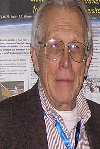
Biography:
B A Khrenov is a Professor of Skobeltsyn Institute of Nuclear Physics (SINP), Lomonosov Moscow State University. He has an MS, PhD and DSc in Physics and Mathematics. He is a Leading Staff Researcher, SINP MSU, Moscow, Russia. He did his PhD “High energy muons in EAS” in 1962 and his Doctor of Sciences (DSc), Professor in Physics and Mathematics, “Experimental study of EAS high energy muons by underground magnetic spectrometer” in 1987 and has published many papers.
Abstract:
In flights of four satellites: Tatiana; Tatiana-2; Chibis and Vernov (RELEC before launching) near UV flashes in wide range of energies (from 1 K Joule to M Joule in UV) were studied by detectors capable to measure temporal profile of the event in range of 1- 128 ms. Among all data on those flashes the most interesting are observations in Tatiana-2 and Vernov satellites series of short flashes (1 ms duration) correlated in trace of 128 ms and in several minutes of satellite flight. Series of flashes are strongly correlated with thunderstorm regions. Orbits of Tatiana’s and Vernov satellites are close to geomagnetic field while Chibis orbit crosses geomagnetic field. Series of flashes were not registered by Chibis detector. This difference gives evidence for correlation of flash series with geomagnetic field. A qualitative interpretation of data on series of UV flashes is considered. UV flashes are suggested to be generated by lightning electromagnetic pulses partly going through ionosphere to the magnetosphere as whistlers. Whistlers’ tracks are correlated to geomagnetic lines. They have a chance to come back to the atmosphere where they produce secondary flashes which could be detected by satellite following geomagnetic lines. Longer series (during seconds and up to minutes) also directed along geomagnetic field lines are due to additional effect of lightning high rate in specific thunderstorm regions.
Galina Nikolaevna Gostilova
Herzen State Pedagogical University
Russia
Title: The navigation network as the basis for the organization of geo-cultural and information space

Biography:
Alina Paranina has received a diploma (with distinction) of the Voronezh State Pedagogical University in "Geography and biology" In 1986. In 1995 she received the academic degree PhD of Geography "11.00.01 - Physical geography, geophysics and landscape geochemistry" Since 1997 she worked at the Department of Physical Geography and Nature resources, Herzen State Pedagogical University, since 2005 - as a lecturer, since 2012 – tutoring in doctoral studies. 2001 – Research on the topic "Information in the geographical space." Over the past 5 years on a research theme she has written more than 100 studies, including one individual monography and two collective monographies.
Abstract:
Navigation is common to all living things: taxis, photoperiodism, orientation reflexes. Special feature of a human is the development of navigation based on instruments, which can be traced back to the Stone Age. Based on field studies and paleo-astronomical calculations, stages of the evolution of ancient navigation technology can be distinguished: 1. natural navigational tools; 2. direct visioning of horizon observatory; 3. using the same facilities as a network in which the elements are bound by the shade; 4. reverse visioning of the shadow of the gnomon: graph of shade - full trajectory of the light source in the sky, the shape of the graph - a reflection of the space-time, the basis of sign systems. Local level of navigation networks and individual instruments provides information in real time to reflect the unique conditions of the location (latitude, the shape of the physical horizon, tradition). The regional level provides internal communication; tools have similarities, reflecting regional special features of lighting modes and the applied technology. Global - provides inter-regional communications. Information modeling of the world on the basis of navigation is provided by: the relative stability of the space super-system in comparison with the dynamics of landscape; value in the life-support system and the general practice; the ability to refer to any object by its position in space-time. Basic levels of modeling of the world: the formation of geo-cultural area based on the physical development of the geographical space, the formation of information space on the basis of modeling of the world (graphic, phonetic symbols and images, the system of abstract concepts). The basic principles of modeling: polycentrism, flow, networking.
Gerard (Jake) Szatkowski
United Launch Alliance
USA
Title: Approaches to interplanetary rideshare accommodations for CubeSats
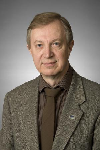
Biography:
Gerard (Jake) Szatkowski is part of Advanced Programs as project manager for Technology Flight Demonstrations and SmallSat accommodations on Atlas and Delta launch vehicles for United Launch Alliance. In this capacity, he is working for numerous Small Satellite projects supporting the USAF, NASA, and foreign governments for LEO, GSO, Lunar, and MARS missions. He has earned 5 degrees from Rensselaer Polytechnic Institute. And has 37 yrs. service on the EELV program.
Abstract:
ULA would like to offer mission solutions to the CubeSat community beyond a dedicated launch vehicle. Rideshare provides satellite developers the opportunity to fly their spacecraft in an inexpensive and reliable manner. The ability to marry Rideshare and Earth-escape disposal of the Atlas-Centaur upper stage provides some new capabilities for performing interplanetary science exploration using CubeSats. ULA mission delivery approaches for CubeSats can take advantage of the newest developments and technologies. One is the operational Aft Bulkhead Carrier (ABC), which can launch up to 24 1U CubeSats to orbit. Second is the Aquila system developed by Adaptive Launch Solutions, which allows for up to a 1000 Kg spacecraft to be launch from inside the Aquila system. A third is the ULA's Lite-electric 3’rd stage (MULE) "tug" that uses an ESPA ring structure as a delivery system. HALL thrusters, using iodine as propellant, would provide for Mars capture and on-orbit maneuvering with 3X the density of xenon. Once in orbit, the MULE can deploy CubeSats from multiple NPSCuL carrier systems. After deployment, the MULE can act as a data relay station for a comm-link between the CubeSats and the Earth DSN. This paper outlines a potential mission opportunity.
E.M. Galimov
Moscow State University
Russia
Title: The concept of origin of the Earth-Moon system from a supraplanetary gas-particles body.
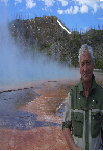
Biography:
Galimov Erik was born on 29/07/1936 in Vladivostok. He graduated from the Gubkin University in Moscow in 1959. He has completed his Ph.D. in 1965 and Doctor of science in 1970. Academician of the Russian Academy of Sciences (from 1994). He is an Honorable professor of the Moscow State University and Director of the V.I.Vernadski Institute (1992-2015). He is an Editor in Chief of Geochemistry International (from 1997). Chairman of the Russian meteorite Committee. President of International Association of Geochemistry and Cosmo chemistry (2000-2004). Fellow of GSA and EGA, Alfred Treibs Medal from GSA (2004).
Abstract:
Present knowledge of the Moon geochemistry allows formulation several constraints on its origin: The Moon and the Earth are identical in their isotopic features including similarity of the 16O-17O-18O fractionation lines and identical Ti, W, Cr, Mg, Si, Li isotopic compositions. The isotopic similarity indicates origin of the Earth and the Moon from the common source. On other hand they are different in chemical composition. The Moon contains much smaller iron core compared to the Earth. The Moon is enriched in refractory main rock forming elements such as Al, Ca, and Ti. The Moon is depleted in volatiles, including heavy volatiles, which could not be lost gravitationally, for instance Rb and Pb. The mega impact model fails to meet these constraints. The model that we have proposed suggests formation of the Earth and the Moon from initial large (within the Hill sphere) gas-particles body (cloud). Its contraction resulted in an adiabatic temperature increase in its interior part and partial evaporation of the particles. The vapor was expelled from the inter-particles space during contraction by the carrier gas, which are hydrogen and water. The latter forms due to reduction of the primordial FeO into elementary Fe. The hydrodynamic flow excludes isotope fractionation during escape of volatiles and explains the loss of the heavy elements (Rb, Xe, and Pb). We show that the iron may also escape in this process.
S. Savin
Space Research Institute
Russia
Title: Intermittency development via plasma jets in the solar plasma flow at magnetospheric boundaries

Biography:
S. Savin is a Leading Research Staff of the Laboratory of Electromagnetic Radiation Investigation at Space Research Institute, Russian Academy of Sciences. He has completed his Ph.D. in Moscow Physical-Technical Institute in the year of 1988 and Doctor Physics/Math. Sciences in the year of 2005. From 1978-1990, he is working as a Research Staff, Senior/ Leading Research Staff of the Laboratory of Electromagnetic Radiation Investigation, Co-I of the Combined Wave Diagnostic Experiments onboard the Prognoz-8 and -10 spacecraft in 1980 and 1985. He worked as a Project Scientist of the APV-N VEGA-1, 2 and APV-F Phobos-1, 2 plasma wave experiments in 1984-1989 and that of the Regatta-Cluster Project. Co-PI of wave instruments on board Interball-1 (1995-2000). Project Scientist of STRANNIK (PILGRIM) Project, Project Scientist of ROY Project
Abstract:
A multi-point study at lowest frequency resonances at the outer magnetospheric boundaries on the fluctuations inside the magnetosphere is presented. The correlations of the dynamic pressure data from CLUSTER, DOUBLE STAR, GEOTAIL, ACE/ WIND, particle data from LANL, Goes with the magnetic data from polar ionosphere stations on March 27, 2005, show that: i) The boundary resonances and their harmonics penetrate inside the magnetosphere; ii) Correlations between the dynamic pressure fluctuations and magneto spheric disturbances can exceed 80%; iii) The new resonance frequencies are lower by an order of magnitude compared with our previous studies being down to 0.02 MHz Analysis of different types of correlations shows that in ~48% of the cases with pronounced maximum in the correlation function the geosynchronous/ionosphere response is seen BEFORE the magneto sheath (MSH) reactions. We propose that some global magneto spheric resonances (e.g. membrane bow shock (0.2-0.5 MHz) and/or magnetopause (0.5-0.9 MHz) modes along with the cavity MHS/ cusp (3-10 MHz) and magnetospheric global modes (0.02-0.09 MHz)) can account for the data presented. Namely, the particular jets at the sampled MSH points can be a consequence of the resonances, while initial disturbance, resulted in the resonance excitations (e.g. through the SW fluctuations at frequencies being close to the resonance ones, interplanetary shocks, Hot Flow Anomalies, foreshock irregularities etc.), passed beside some MSH spacecraft.
Serge Plattard
European Space Policy Institute
Austria
Title: Could introduction of space payload management be the next natural step to space traffic management

Biography:
Serge Plattard, after a Doctorate in Nuclear Physics, followed by 12 years of research work in France and in the US, moved to science and technology policy/cooperation, at the French Ministry of Foreign Affairs, and in several French Embassies as Science Counsellor. He then joined CNES (1998) as Director of international relations before becoming the founding Director of the European Space Policy Institute (2004-07). Back at ESPI since late 2012, he currently works on GNSS governance issues, space security, and dynamics of the space exploration. He is Honorary Professor of University College London since 2013 and has lectured at post grad level for 10 years in two French universities, and a Business School. He also authored/co-authored over 50 publications /communications, and a book.He is member of the International Academy of Astronautics and a founding member of Euroscience.
Abstract:
Significant initiatives on space traffic management have been recently taken, essentially by developing principles of outer space transparency and confidence building measures (TCBM) beneficial to a safer conduct of space activities. The need for improved practices in space traffic management is a consequence of the increasing number of space-faring nations allowing for more types of missions, growing number of space debris, new private entrants, and rising space content in running critical national infrastructures, to name a few. These expanding space activities underscore the society’s dependency on space systems and henceforth its vulnerability vis-à -vis the latter, calling for an enhanced long-term sustainability of outer space activities. But the lack of information on the nature of some space payloads and their associated missions introduce a persistent flaw in succeeding to achieve a long sought stable and safer space environment. Indeed this noticeable weakness in the mentioned initiatives is not taken into account at this stage. To overcome this difficulty, a space situational awareness system (SSAS) based on a multinational organization, or under the purview of a UN steered agency, is proposed. It could be implemented promptly, provided there is a shared political will and a recognized urgent need to do so by major space-faring nations gauging their long-term interest while there is still time. The space deterrence postures by dominant space powers that have been identified during the past ten years, or so, argues in favor of broadening as soon as possible the scope of the current TCBM.
Narayanasetti Venkata Vighnesam
Visvesvaraya Technological University
India
Title: India’s first Moon and Mars missions orbit determination
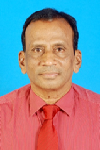
Biography:
N.V.Vighnesam is currently working as Professor at Dayanandasagar College of Engineering, Bangalore, India. He holds his M.Sc. from Andhra University and Ph.D. from Indian Institute of Technology, Bombay, India. He worked as Head, Orbit Dynamics Division, Flight Dynamics Group, ISRO Satellite Centre. He was responsible for design and development of orbit determination system for all ISRO Satellites. He has published more than 65 technical papers.
Abstract:
India’s first Moon mission (Chandrayaan-1) and Mars Orbiter Mission (MOM) carrying several scientific instruments for the purpose of expanding scientific knowledge about the Moon and Mars were launched in October 2008 and November 2013 respectively. The spacecrafts were put into their target orbits by carrying out sequence of orbit maneuvers. Precise orbit determinations are carried out during each phase of the mission using tracking data from network of tracking stations configured for the mission. The determined orbital solutions are used for spacecraft navigation, mission planning, and science data processing. ISRO’s operational orbit determination program (ODP) used for low earth missions was suitably updated and validated before the launch of these missions. Orbit Determination methodology and the performance of Chandrayaan-1 and MOM orbit determination systems during initial phase of the mission along with achieved orbit determination accuracy in the early normal phase is presented.
Sergey I Ivashov
Bauman Moscow State Technical University
Russia
Title: Non-destructive testing of rocket fuel tank thermal insulation by holographic radar
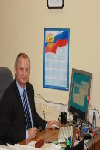
Biography:
Sergey I Ivashov completed PhD from Space Research faculty, Moscow Institute of Physics & Technology, with honours in 1972 and as a Post-graduate student he had successfully submitted the thesis for a PhD degree in 1975. He worked as a Scientific Researcher in rocket industry of the USSR in 1975-1977. Since 1977 up to 2000 he had been working in the Central Scientific and Research Institute of Radio & Electronic systems, Moscow, as a Senior Scientific Fellow and thereafter he had been promoted to Head of Laboratory. From January 2001 up to now he is the Head of the Remote Sensing Laboratory at the Bauman Moscow State Technical University, Moscow. His latest research relates to NDT&E of thermal insulation of rocket cryogenic fuel tanks by holographic radar. Other scientific interests are connected with holographic subsurface radar design and its applications for searching of bugging devices and civil construction engineering. He was rewarded with the Russian Federation government's prize in the field of science and technology for creation of the RASCAN holographic radar technology. He is a member of Editorial Board of an International Journal “Sensing and Imagingâ€.
Abstract:
The Space Shuttle Columbia disaster occurred on February 1, 2003, killing all seven crew members. This and other incidents (e.g. with the Russian return vehicle which fortunately did not lead to catastrophic consequences) have aroused interest in the development of new methods for non-destructive testing of insulation and thermal protection coatings of spacecrafts and fuel tanks. In the opinion of NASA investigators, one cause of the Columbia disaster was defects in the thermal protection coating of the shuttle’s external fuel tank containing cryogenic components. To reduce fuel vaporization and prevent icing of the tank surface which could damage the shuttle, the tank is covered with insulating polyurethane foam. Methods of ultrasonic diagnostics, which are widely applied for non-destructive testing of different constructions, are ineffective for foam insulation due to polyurethane's high porosity, which leads to high levels of acoustic attenuation. Similar considerations apply to the silicate fiber tiles that shield the outer surfaces of the USA Space Shuttle and Russian Buran. High porosity of the fiber tiles also produces incoherent scattering and attenuation. Microwave diagnostics using holographic subsurface radars could be a good alternative to ultrasonic testing. The basic advantage of microwave in comparison with ultrasonic methods is the fundamental difference in physical properties effecting the propagation of electromagnetic versus acoustic waves in heterogeneous media. Electromagnetic waves reflect from heterogeneities only when their dielectric contrast is sufficient. Thus, electromagnetic waves propagate practically without loss in foam insulation in which the matrix polyurethane has approximately the same permittivity as the air in the pores. A new method for using the holographic subsurface radar RASCAN 5/15000 to reveal internal defects of foam materials was proposed, and experiments on models of thermal insulation coatings were performed. The experimental results were displayed in the form of radar images on which defects in the heat insulation were shown to provide a good contrast and effective detection.
Natalia Petrova
Kazan Federal University
Russia
Title: Results of computer simulating the lunar physical liberation for lunar polar telescope

Biography:
Natalia Petrova has completed her PhD in Pulkovo Astronomical Observatory from Saint Petersburg, Russia. Her investigations were connected with theoretical description of the lunar rotation. She worked in Japan in SELENE-mission data processing as the Invited Researcher. At present, she has been elected as the Docent at the Computer Sciences Department at the Kazan Power Engineering University. Simultaneously she works as the Senior Researcher at the Kazan Federal University. She has published more than 30 papers in reputed journals.
Abstract:
The study of lunar rotation (physical libration) gives reach information about the lunar interior because of this the space experiments to pose on the lunar polar zone a small optical telescope are planned in Russia and in Japan. The purpose of the experiment was to detect the lunar physical liberation with millisecond accuracy. Computer simulation of these future observations is being done with the purpose of optimizing the observations of effective placement of measuring system on the lunar surface and testing of sensitivity of new observations to various features of the lunar interior structure. The software for the selection of stars and reduction of their coordination onto the period of observations was developed at the simulation, the tracks for the selected stars are constructed and analyzed and their sensitivity to the internal characteristics of the lunar body, in the first place, to the seleno-potential coefficients, was tested. Inverse problem of lunar physical liberation was formulated and solved. It was shown that seleno-graphic coordinates of polar stars were insensitive to longitudinal liberations ï´(t). Comparing coordinates calculated for two models were a rigid and deformable moon which is carried out and the components sensitive to love number K2 were revealed. Analytical theory of physical liberation was a very convenient tool for modeling the upcoming observations.
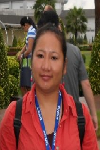
Biography:
Akano Yhokha has completed her PhD this year only at the age of 29 years from National Central University, Taiwan ROC. She has received her M.Sc. degree in Geology from the Department of Geology, Kumaun University, Nainital, India in the year 2008. She now focuses her research field in InSAR, crustal deformation and neotectonics activity in Indian Himalayan. She has published just 2 papers in reputed journals and about 9 conference papers.
Abstract:
The Himalaya and adjoining Ganga (also called Gangetic) plain are traversed by a number of neotectonically active longitudinal and transverse faults. However, the pattern and extent of present day slip rate along these faults is not yet well known. We herein present the results of our investigations directed in this direction. Surface deformations induced by active faults during a period of three years from August 2008 to August 2010 in the southern part of Uttarakhand state of India have been monitored. Multidate ENVISAT radar images of the area have been analyzed by applying the lastest Interferometric Synthetic Aperture Radar (InSAR) remote sensing techniques of Persistent Scatterer Interferometry (PSI) and Atmospheric Correction InSAR (ACI) using the MODIS data. Both the PSI and ACI techniques were found capable of extracting valuable surface information despite the natural challenges of vegetal cover and mountain terrain. The study revealed some conspicuous surface deformation patterns, which are related to active movements along some of the major faults/thrusts of the area, e.g., the Himalayan Frontal Thrust (HFT) and the transverse Garampano-Kathgodam Fault (G-KF). The G-KF acts as a segment boundary fault, dividing the study area into two distinct part with relative subsidence on the east and uplift in the west. Based on our presumption about the G-KF, a generalised tectonic model of the study area has been created. The study has provided a better understanding of the active tectonics of the area

Biography:
Xiaoxin Ye is a PhD from Department of Materials Science and Engineering, Tsinghua University, China. His research fields involve the biomedical titanium alloy processing/characterization, surface modification, mechanical/corrosion/biocompatibility property. His research is currently about electro pulsing-assisted processing and characterization of titanium alloy. Electro pulsing ultrasonic striking and electro pulsing-induced topographical oxidation have been also brought in to modify the materials surface for improving the micro hardness, corrosion resistance and biocompatibility. His research interests include green materials processing, surface coating, nanomaterials, energy materials and biomaterials.
Abstract:
The effects of electro pulsing induced gradient topographic oxide coating of Ti-Al-V alloy matrix strips on the fibroblast adhesion and growth were investigated. The goal in biomaterial surface modification was to possess desired recognition and specificity through modifying its surface condition like topological structure. Here we developed a unique strategy of high-energy electro pulsing treatment (EPT) for manipulating surface gradient bio-functionalization of basal textured Ti-6Al-4V alloy strips with the surface gradient topographic oxide coating, which brings in the gradient distribution of surface conditions including matrix alloy, ordinary TiO2 film and TiO2 microwaves on a single strip. High-energy electro pulse is frequently used as an electrically-treated method in improving the materials microstructure and mechanical property. This paper reports firstly the surface modification under EPT aiming to improve the biocompatibility, which will meet the demand of biomaterials in different parts of human beings. Novel TiO2 microwaves topological structure on the materials surface resulted in better biocompatibility with more active fibroblast bio-reaction including higher cells viability, better physiological morphology and stronger adhesion binding, which is ascribed to surface chemical components, surface energy and specific surface area under EPT manipulation. The key role of forming TiO2 microwaves structure solely under EPT is the selective effect of the electro pulses going through the textured specimen, which thus builds a selective growth of the oxide and forms the microwaves topological structure on the materials surface. The positive contributions of EPT in the thermodynamics and kinetics of oxide coatings growth are attributed to the reduction of nucleation energy barrier and acceleration of atomic diffusion. Thus, the gradient functionalization of biomaterials can be tuned over several seconds EPT in the titanium alloys, opening an energy-saving and high-efficiency door to diverse biomedical applications including the tissue engineering and biological interfaces.
Alexander M Krot
United Institute of Informatics Problems of National Academy of Sciences
Belarus
Title: The universal stellar law and its application to the explanation of stability and forms of planetary orbits

Biography:
Alexander M Krot, Professor, DSc is a Head of the Laboratory of Self-Organization System Modeling at the United Institute of Informatics Problems of the National Academy of Sciences of Belarus. He graduated from the Belarusian State University, Department of Radiophysics in 1982. He received PhD in 1985, then degree of Doctor of Sciences (DSc) in 1991 and became Professor in 1997. He has published 275 scientific works including 3 monographs and more than 60 articles in refereed journals.
Abstract:
This work considers the universal stellar law (USL) for explanation of stabilities and forms of planetary orbits in extrasolar systems based on the statistical theory of gravitating spheroidal bodies. It shows that knowledge of some orbital characteristics for multi-planet extrasolar systems refines own parameters of stars based on the combined 3rd Kepler’s law with universal stellar law (3KL-USL). The proposed 3KL-USL explains the stability of planetary orbits in the extrasolar systems entirely and predicts statistical oscillations of the orbital angular velocity of rotation of planets around stars. This work applies the statistical theory of gravitating spheroidal bodies to explore forms of planetary orbits with regard to the Alfvén’s oscillating forces in the Solar system as well as other exoplanetary systems. It explains an origin of Alfvén’s radial and axial oscillations modifying forms of planetary orbits within the framework of the statistical theory of gravitating spheroidal bodies. This work finds that temporal deviation of the gravitational compression function of a spherically symmetricalspheroidal body (under the condition of its mechanical quasi equilibrium) induces the additional periodic force. In turn, as shown here if the additional periodic force becomes counter balance to the gravitational force then the principle of anchoring mechanism is realized in extrasolar systems, i.e. the stability of planetary orbits occurs. The work also notes that spatial deviation of gravitational potential of the rotating spheroidal body from spherically symmetrical one implies the difference of values of the radial and the axial orbital oscillations (even in the case of its mechanical equilibrium).
Valery Korepanov
Lviv Center of Institute for Space Research
Ukraine
Title: Miniature scientific-grade electromagnetic sensors for cubesats

Biography:
Valery Korepanov is a Scientific Director of Lviv Centre of Institute of Space Research of NASU and SSAU. He got his PhD degree in Electromagnetic Measurements in Lviv Polytechnical Institute in 1970 and Habilitation of PhD in Geophysics in Institute of Physics of the Earth (Moscow) in 1991. He has more than 500 publications. His area of interests are; Development of theoretical and methodological aspects of electric and magnetic fields’ investigations in different media: space plasma, marine water and on-land, study of electromagnetic precursors of natural hazards, design and manufacturing of different types of magnetometers and electrometers.
Abstract:
The mini-, micro- and nanosatellites (including cubesats) became the popular way to get access to the scientific experiments in space for universities and small companies. There are several successful examples of the development and manufacturing of cubesats in the universities throughout the world and some of them offer well designed sophisticated basic structure with attitude control and location determination facilities and enough informative telemetry link. Still one advantage of cubesats is, relatively low launch cost – normally, they are launched in a swarm as piggy-back payload. The most complicated problem for the realization of scientific experiments onboard cubesats remains, the development of small and light but enough sensitive sensors. Because of this the majority of cubesats launches, as far as the author could find it in available publications, are aimed at the technology demonstration missions, the goals of which are mostly the tryout of advanced cubesats service systems and not the measurements of space plasma parameters with necessary for scientific tasks solution sensitivity threshold. The present report describes the new design of miniature three-component sensors for measurements of DC and AC magnetic field and possible extension to measure electric field in space plasma which is good enough for scientific research technical parameters. Their parameters, application example and test results are discussed.
Claudiu-Lucian Prioroc
University of Turku
Finland
Title: Stabilizing satellite relative motion using low thrust nonlinear time-delay feedback control

Biography:
Claudiu-Lucian Prioroc has completed his PhD from University “Politechnica†of Bucharest with the dissertation titled Small satellite attitude determination. Between 2010 and 2012 he worked on the ESA educational ESMO mission as the team leader of the Attitude and Orbit Control System (AOCS) team in Bucharest. During this period he took part in internships at SSTL and Advance Space Concepts Laboratory Strathclyde University, where he worked on the development of the AOCS. Starting from 2012 he is an AstroNet-II Marie Curie Research Fellow at University of Turku, Finland. The main focus of research is directed towards satellite formation flying and relative motion.
Abstract:
This paper describes the development of a stabilizing control method for the relative motion between two satellites using continues low thrust. The relative motion of two satellites is considered in the two body problem with J2 perturbation and it is described by the Clohessy–Wiltshire equations. The satellites’ orbits are considered to have slightly different periods and inclinations, thus the relative motion between them will not be bounded. To stabilize the relative motion, time delay feedback control is used. The time delay feedback control eliminates the necessity of having a pre-defined reference relative motion to be tracked by the follower satellite, by using the previous relative orbit as a reference for tracking. First we consider the stability in the sense of Lyapunov. Once the Lyapunov function is found, a first order sliding mode time delay feedback controller is developed to stabilize the relative motion, based on the free variable transformation, Lyapunov transformation and considering that the J2 perturbation is bounded. Numerical simulations are used to compare the performance of the developed nonlinear time delay feedback controller with linear feedback time delay control as well as with PD controller. Also it is shown that by using the time delay feedback control one can design artificial reference relative orbits that can be tracked by using feedback control laws. Numerical simulation results prove the effectiveness of bounding the relative motion for long periods of time using the proposed stabilizing method.
George Kordzakhia
Javakhishvili Tbilisi State University
Georgia
Title: The Study of Glaciers Based on Satellite Earth Observations and Snow-ice Boundary Determination

Biography:
George Kordzakhia has completed his PhD at the age of 28 years from Hydrometeorological Centre, Moscow and postdoctoral studies in the Hydrometeorological institute of the Technical university of Georgia. Dr. George Kordzakhia’s professional interests are concentrated on the researches of atmosphere dynamics, satellite earth observations; climate change, hydrology, glaciology oceanology. Participated in several international programmes (UNDP, EC FPs, NATO Programme for Peace etc.). Participated in several international conferences, symposiums, sessions, WGs work of several international organizations (WMO, IPCC, UNEP etc). Member of the several international organizations at national/regional levels. He has published more than 25 papers in reputed journals.
Abstract:
The variations in glaciers are the important indicators of regional climate change. The research of glacier melting is important for studies of sea/ocean level changes. Satellites earth observations (EO) are powerfool tool that allow creation of glacier’s data sets with needed regularity. The accurate determination of the glaciers characteristics needs precize definition of glaciers counturs. Glaciers contours automatic determination is based on different spectral properties between the ice and snow by a combination of different spectral channels from visible and infrared range.Satellite data processing, first of all, means radiometric calibration of the satellite specific channels. For glacier research it is necessary to use: i. Slope gradient calculations on the bases of Aster DEM; ii. Slope exposure and the illumination of the highlights of the glacier region. Article presents results of determination of snow line altitude from satellite (EO) data for certain glaciers of Great Caucasus, in the eastern part of Georgia. Landsat-8 OLI TIRS images for the end of ablation period were used to identify snow line position. Snow line altitude was extracted from Advanced Spaceborne Thermal Emission and Reflection Radiometer digital elevation model (Aster DEM). For simplicity the glacier are classified into three classes, which correspond: the first and second - accumulation zone, third - the ablation zone. The border line between accumulation and ablation zones refers to snow line. Using the DEM glacier, band ratios and NDSI calculations snow line heights are determined.
Yavor Shopov
Sofia University
Bulgaria
Title: Extended microsatellite up/down link using transmission through a GEO satellite
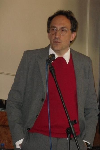
Biography:
Yavor Shopov has completed his PhD from Sofia University and Postdoctoral studies from McMaster University. He is Head of the University Centre for Space Research & Technologies, Sofia University. He is supervisor of Master programme on Aerospace engineering of small satellites and co-supervisor of the Master programme on Space research of Sofia University. He has published more than 100 papers in reputed journals and has been serving as an Editorial Board Member of repute. His fields of research: Applications of satellites in applied and fundamental research, space and solar terrestrial physics, development of optical and spectral equipment for multispectral imaging.
Abstract:
Hyperspectral imaging from satellites produces vast amount of data, which is extremely hard to download. To extend the download period, large satellites use extended up/down link time by transferring of their data through a GEO satellite when their orbital position does not allow direct connection with their ground station. Recent state- of –the- art of development of micro satellites still does not apply this innovative technology. Here we discuss possibilities to apply such technology in the micro satellites design. It will allow obtaining of high resolution multispectral images or video from micro satellites. We are designing a satellite bus “OK Express†with mass <35kg, size 330x330x630 mm, powered by silicone cell rotating panels with power ~ 160W. It has telemetry, sun sensor, earth sensor, magnetometer, active stabilization with reaction wheels, magnetic coils and propulsion with hot gas micro thruster. Its extended download period is produced by steerable phase array antennas (with large coverage) pointing to a GEOs at, steerable ground pointing phase array antennas (with large coverage), a differential GNSS receiver for position and attitude determination and high speed S-band data up/down link - DVB S2. DVB S2 is a new broadband satellite technology for broadcasting of digital video or TV signal with higher efficiency of utilization of the spectrum. This micro satellite will record high-resolution images and video with ~ 6m GSD at visual wavelengths and ~ 20 m GSD at thermal infrared imaging from 600km orbit.

Biography:
K V Suryabhagavan is an Assistant Professor at the Remote Sensing and GIS in School of Earth Sciences, Addis Ababa University, Ethiopia. He received his BSc and MSc degrees in Geology from Andhra University in 1992 and 1994 respectively and his PhD degree in Geology from Andhra University in 2001. He received his MTech in Remote Sensing and GIS from IIRS, Dehradun in 2004. He mainly deals with the application of remote sensing for geology, climate change and vegetation dynamics. He has published more than 25 papers in reputed journals and has been serving as an Editorial Board Member.
Abstract:
The successes of military operations depend on how decision makers and planners evaluate the battle field prior to the deployment of armed forces on the ground. Off-road trafficability of the terrain is one of the key military operations that should be provided for military commanders at all levels in a real time scenario. This paper evaluates the state-of-the-art of spatial modeling techniques for off-road trafficability of wheeled military vehicles using GIS and remote sensing techniques. The expert systems and Weighted Overlay Analysis (WOA) were compared for modeling off-road trafficability. Similar data layers of land-use/land-cover, soil, slope, rivers and manmade obstacles were used to generate the off-road trafficability maps from the two methods. The goal of comparison of these decision making tools was to test whether data in an ordinal scale from the WOA to produce comparable result with the Expert system that use hierarchy of decisions. There was a strong spatial correspondence between the outputs from the two methods with a spatial correlation of 0.78. A zonal cross tabulation between results showed that the two methods strongly accord to each other in the SLOW-GO and NO-GO trafficability classes with 86% and 75% summarized in the same zone, respectively. There was also a significant disagreement between the two methods in the GO and VERY SLOW-GO classes with only 53% and 31% summarized in the same zone, respectively. This study as a whole can explore variations of these two methods of the military planning and its relationship with existing roads.
Benhard Sitohang
Institute of Technology BandungIndonesia
Indonesia
Title: Finding new fishing grounds using sea surface temperature data from satellite remote sensing in case indonesian waters

Biography:
Benhard Sitohang has finished his master (informatics) in 1980 and Ph.D degree (informatics) in 1983, both from Universite de Sciences et Techniques et Languedoc-Montpellier II, France. From 1984, he has been working at Institut Teknologi Bandung (ITB). Since Ph.D degree, he teach and doing research in Database, Non-Alphanumeric Data processing, and Big Data.
Abstract:
Indonesian marine fisheries potential of approximately 65 million tons per year and become the largest in the world, but only about 15 percent exploited (10.5 tons per year). The fish taken from waters that have exceeded the maximum sustainable yield. This is a challenge for us to find new fishing grounds. Remote sensing satellite data utilization is the solution to predict the fishing grounds in Indonesian waters. Fishing grounds can be predicted by observing the phenomenon of upwelling in the ocean waters. Upwelling phenomenon can be detected by analyzing sea surface temperature (SST) data acquired by satellites such as NOAA and Terra/Aqua. Several algorithms have been developed to process satellite data resulting SST similar to actual SST. We develop a model of upwelling detection using SST data from satellites Terra / Aqua MODIS Level 3. We exploit the concept spatiogram to determine upwelling region of interest (RoI) in the study area, then use the structure growing to ensure that the RoI is a valid upwelling. We define indicators upwelling areas where there is a temperature difference of 0.5oC within a radius of 3 km, then all pixels in a radius of 3 km (12 pixels) from the center of mass must be taken into account. We assume the RoI is determined as far as 21 km which is equivalent to 84 pixels. We are still working on intensive research; the results are highly dependent on the quality of the satellite data used, in particular the case of cloud cover.
V K Srivastava
Maharashtra Forest Department
India
Title: Managing forest through working plan prepared using satellite data and GIS: A case study of Pune forest division, Maharashtra, India

Biography:
V K Srivastava obtained PhD in Ecology in 1979 from Saurashtra University, Rajkot, but started carrier as Research Officer at Forest Research Institute and Colleges, Dehra Dun, India in 1977. Thereafter, he joined Space Applications Centre, Ahmadabad, as a Subject Matter Specialist (Forestry) in 1983 and continued till June 2006. Here, he developed remote sensing methodologies for Forestry. Subsequently, he joined National Remote Sensing Centre, Hyderabad and continued till superannuation in March 2012. Here, he worked on Land use/ cover dynamics in Indian River basins. He has published 70 research papers in various journals, seminars and symposia, scientific and technical reports.
Abstract:
Forest management in India is carried out as per the guidelines prescribed in the Working Plan of a division, at compartment level which is the smallest management unit. Forest working plan is a written document prescribing the management practices in view of the forest health, general land use, anthropogenic and topographic features in a forest division. The working plan is implemented over a period of ten to fifteen years. At the end of the plan period, the working plan is either revised or rewritten owing to the existing variability both in crop and other conditions. Preparing or revising a forest working plan conventionally is a costly affair. It takes about two to three years to prepare a working plan of a forest division. Satellite data has been found to be of much use to derive thematic maps at desired scale. These maps along with other collateral data can be integrated in GIS. A query can be subsequently be made to allocate area for specific management practice. A working plan thus prepared is cost effective. Realizing the importance of geomatices, Maharashtra Forest Department joined us in revising/preparing the Forest Working Plan for Pune forest division as a pilot project. The present study describes the methodology to derive various thematic maps from satellite data at desired scale and their integration with other collateral maps in GIS. It also elucidates the criteria for defining working circles. For each working circle, a management practice was also prescribed which was approved by the state for implementation.
Archana Nandibewoor
Visvesvaraya Technological University
India
Title: Remote monitoring of agricultural crops using the application of spectral imaging- spectral remote sensing
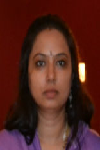
Biography:
Archana Nandibewoor is currently working as Assistant Professor in the Department of CSE, and Deputy COE, SDM College of Engineering and Technology, Dharwad, Karnataka India. She holds her MTech in CSE and BE in ECE from Visvesvaraya Technological University, Belgaum, India. She is currently pursuing her PhD in the field of Image Processing-“Satellite Remote sensingâ€. She has more than 05 Scientific Papers in National and International Peer Reviewed Journals and conference proceedings to her credit. Her work is indexed and cited in various peer reviewed journals like IEEE, ELSEIVIER, etc. She has successfully Guided 06 Students for MTech Degree and 15 for BE Degree. She has travelled countries like London, Germany, Belgium, France, for presenting research papers in conferences. She is member of International Association of Engineers (IAENG).
Abstract:
One of the emerging technologies that can be used to study the rate of vegetation is spectral remote sensing. This study includes two types of image data - Hyper spectral satellite image and Multi spectral satellite image. Hyper spectral satellite image data was used to calculate different spectral indices. The study on spectral indices which show some significant changes with variation in vegetation are discussed. These spectral indices normalized differential vegetation index (NDVI), simple Ratio pigment index (SRPI), red edge (Clrededge) and SG (VI green) are used to monitor the vegetation. All these spectral indices stated above showed significant changes with change in rate of chlorophyll and nitrogen concentration. The graph plotted for different wavelengths verses the reflectance values showed different curves for change in the area. Hence satellite images can give lot of information that needs to be explored. Three datasets of Multi spectral satellite image data (7 Dec 2013, 8 Jan 2014, 9 Feb 2014) have been acquired from Land sat 8 OLI (Operational Land Imager)/TIRS (Thermal Infrared Sensor) satellite periodically by providing appropriate path and row in order to assess the growing stages of crop. The acquired images are in the form of a set of bands. Appropriate bands are combined to form a multispectral RGB image. A spectral line graph is plotted by using reflectance data of the specified area of crop. It is found that there is high reflectance in green bands during growing stage and this value gets decreased during the near harvesting stage. Also NDVI value has been calculated at each stage. The status of the maize crop has been concluded by experimental analysis at Laboratory and by using NDVI values. Finally, it is observed that the crops are healthy.

Biography:
Abstract:
As spacecraft operators continue to launch more satellites in LEO, MEO, GEO these orbits becomes very dense with huge number of working satellites, non-working and space debris. This may affect future space exploration. Of course as per today’s situation we need satellites for various purposes like Communication, GPS, Military, Weather and etc. Instead of sending new and separate satellites for every fields. We can send a common satellite with major payloads or otherwise we can reuse those old nonworking satellites. This can reduce space debris, clean space, etc. Here we are proposing an idea which can help to keep our space clean. Our idea is to make common satellite for all fields. Our project is Multitudinous Objective Satellite it as three phases 1st Phase: MOS-A – It is a scientific research satellite which will help us to Know about earth atmosphere, climate, electron & photon Counts in atmosphere, change weather, imaging, monitor Crops radar and tracking space debris, etc. 2nd Phase: MOS-B - It is mainly used for tele-communication, navigation, etc. 3rd Phase: It is reuse the old satellites Our main objective of this MOS project is to do more scientific researches and by sending MOS-A & MOS-B we can get more resources and this can reduce space traffic in future. Advantages of our project clean space, it can keep future space exploration safe, instead of sending many satellites in single field we can send MOS satellite it saves more budgets.
Amit Patel
Charotar University of Science & Technology
India
Title: Onboard Intelligence system development for Remote sensing Application

Biography:
Amit Patel is an Assistant Professor at Charotar University of Science & Technology (CHARUSAT), He has completed his M. Tech in April, 2008 from Gujarat University and he is presently doing Ph.D. in the field of Microwave Passive component design from CHARUSAT University, Changa, and Gujarat, India. I have submitted my thesis for review. Currently, he is deputed in CHARUSAT Space Technology Center as Researcher. Here, In CHARUSAT Space Technology Center we are designing and developing Experimental Payloads as well as our university Small Satellite. He has published more than 20 research papers in well reputed journal and conferences.
Abstract:
In Remote sensing satellites, information is transmitted in store and forward mode, which acquired by sensors (camera) imagery stored on board till ground stations come not within view. Satellite imaging sensors generate mass volumes of data at very high speeds. On the other hand, storage capacity and communication bandwidth are crucial parameters for satellite resources and that decided cost and power requirements. By processing on the data in terms of compression and detection of objects which are required based on applications at onboard and only those data are transmitted at ground level is create an efficient utilization of resource. Here, we have proposed an algorithm based on ratio and threshold method which work on color images that work very efficiently for discriminating different objects of earth as well as clouds. Accuracy of algorithm is more than 97% and gives better PSNR (peak signal to noise ratio). Reconfigurable computing technology, which combines the flexibility of traditional microprocessors with the performance of ASIC devices, is very promising for space applications. FPGA is used for verification and testing of the proposed algorithm, the results are accurate and matched with the simulation results.
Keyur Mahant
Charotar University of Science & Technology
India
Title: Back-end realization of AIS protocol using FPGA

Biography:
Keyur Mahant is an Assistant Professor at Charotar University of Science & Technology (CHARUSAT). He has completed his M.Tech in April, 2011 from CHARUSAT University, Changa, Gujarat, India. Currently, he is deputed in CHARUSAT Space Technology Center as Researcher. Here, In CHARUSAT Space Technology Center we are designing and developing Experimental Payloads as well as our university Small Satellite.
Abstract:
This research and development paper gives the information about AIS protocol, its applications and implementation of the protocol in Field Programmable Gate Array (FPGA). Automatic Identification System (AIS) protocol is a scheme for generating a self-organized data network between marine vessels. AIS can be used for Collision avoidance, Search & rescue, Fishing Fleet Monitoring and Control, Vessel traffic services and aids to navigation. AIS Transponder on ship broadcast information regarding its speed, position and navigational status at regular interval using VHF transponder at 161.975 MHz and 162.025 MHz’s These speed, position and direction information is generated from the ship's navigational sensors, navigation satellite system (GNSS) receiver and gyrocompass. Other information like name of the vessel and VHF call sign is programmed when installing the equipment and it is also transmitted at regular intervals. This research paper proposes a technique for implementation of AIS protocol in FPGA. In this paper FPGA is used for processing the data because this technology gives flexible designs with relatively short design time and at the same time maintain some of the good properties of ASICs, such as relatively high performance and low power consumption.

Biography:
P S Roy is a Chair Professor in University of Hyderabad, India. He has 37 years of experience in remote sensing and geospatial science with ISRO. He has completed his PhD. He has been involved in research and academics in the field of spatial analysis and modeling. He is Fellow of National Academy of Science, India (FNASc) and National Academy of Agriculture Sciences (NASI). He has published more than >150 research papers in reputed journals and has been serving as an editorial board member of repute.
Abstract:
India has experienced major land use and land cover Change (LULCC) over the past few decades. It has resulted in changes in the natural ecosystems and habitats supporting the rich biodiversity and threatening conservation efforts. For the first time satellite remote sensing has been used to prepare a seamless national level vegetation type (2005) and land use and land cover (LULC) maps (at decadal intervals for 1985, 1995 and 2005) has been prepared and for understanding the long-term usage patterns of natural resources and facilitating sustainable management to plan, monitor and evaluate development. The study characterizes and maps detailed vegetation type distribution in the country in terms of occurrence and distribution, area, percentage of protected area (PA) covered by each vegetation type, range of elevation, mean annual temperature and precipitation over the past 100 years. The LULC maps follow the classification to ensure compatibility with other global/regional LULC datasets for comparison and integration. The study highlights the changes i.e., loss of forest cover in central and northeast India, increase of cropland area in western India, growth of peri-urban area, and relative increase in plantations. The study compares national vegetation and decadal LULC maps with Glob Cover, Hold ridge’s life zone map and potential natural vegetation (PNV) maps) and global LULC products (Glob Cover and MODIS) respectively, using 15,565 ground control points to assess the accuracy (>90%). The database is used for national and regional studies on land dynamics, drivers of change and climate change research. The digital vegetation map is now available through a web portal (http://bis.iirs.gov.in).
